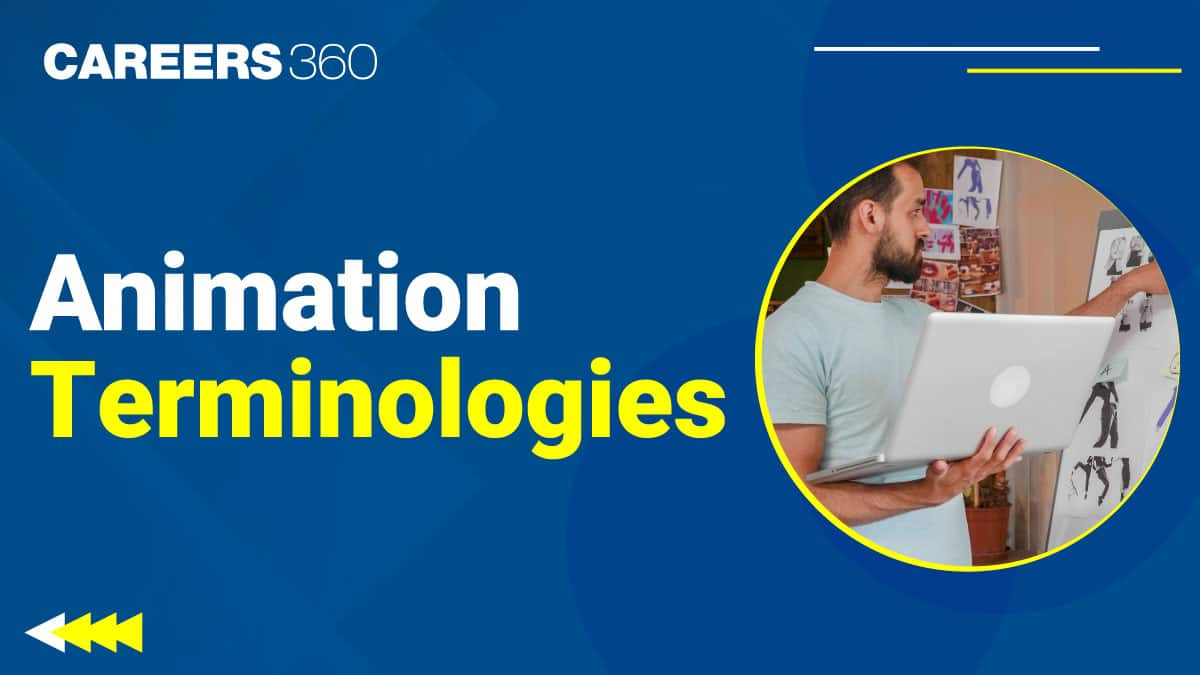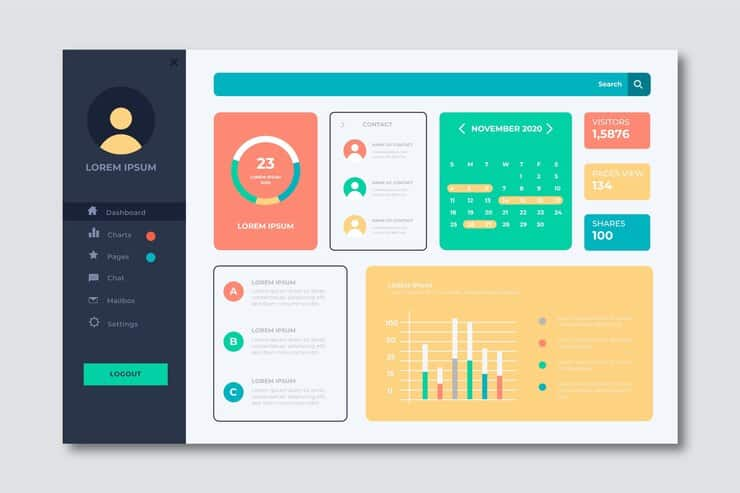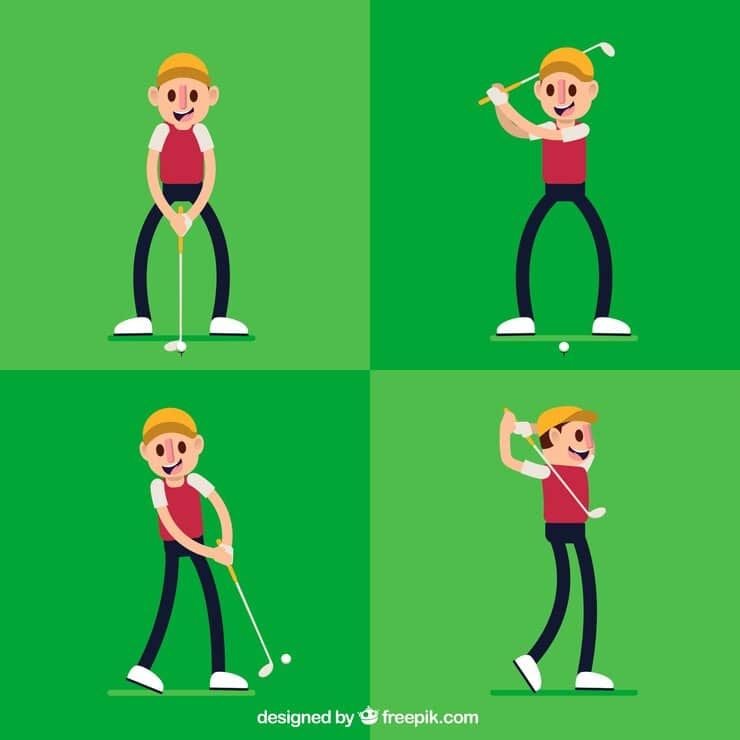Animation Terminologies Every Student Must Know
With the growth of digital media, animation has become a field of interest among the younger generation. Many students want to make a career in animation design after 12th. However, a successful career requires students to know certain animation terminologies used in professional settings. Knowing these animation terms can help them get a good start in their career. To know more about terminologies used in animation courses, read the full article.
This Story also Contains
- Common Animation Terminologies
- 3D Animation Terminology
- 2D Animation Terms

Common Animation Terminologies
Animation can be of many types, out of which 3D animation and 2D animation are important. We have covered these types of animation terminologies that will help the students understand the difference better. The words might overlap in the categories as they all aim to create entertainment out of sketches. Read further to understand the important terms in each category of animation.
3D Animation Terminology
Professionals use the 3D animation terminologies in office settings to convey their ideas to others. Here are some important 3D animation terminologies that one should know.
Animatic: Also known as Leica, is an animation terminology, which means a mixture of audio and visual peace which mixes the storyboard with the audio track.
Breakdown: The word refers to motion graphics terminology which refers to the post describing how the character's object moves from the key position to another position.
Eccentric Action: At times very fast and small movements cannot be animated normally and this 3d animation term is used there. Actions like shivering, shaking, little finger gestures etc.
Frame: It is an animation terminology in which an image formed with the succession of images is known as a frame.
Followthrough: When a character changes the direction and parts of a body continue in the direction as it was previously doing which is known as followthrough.
GUI: The full form of this 3d animation term is Graphic User Interface which is a computer program that acts as a user interface and uses the set of images and graphic objects to show the information and actions available on the interface. The mean objective of this software is to provide a visual environment to communicate with the operating system of a computer.

Layout: The stage in which the positions of the characters are decided along with the staging and timing, angle and position of the camera etc are planned. The effect of lights and shadows is also decided in this phase.
Monologue: Monologue is a 3D animation terminology which is also used in literature studies. It means that the speech which is given by a single person to the receiver(s) cannot be the character itself.
Pipeline: The 3D animation term Pipeline refers to the structure through which a shot needs to pass to the studio and production.
Silhouette: The schematic view or outline of an object without any kind of detail is known as a silhouette. It is an animation terminology like the shadow of an object which is also used in photography.

Spacing: It is motion graphics terminology, and it states the manner in which an object moves to cover a distance from one position to the next position is known as spacing.
Thought Process: The steps through which a character has to pass in order to reach the thought or emotion that's being represented is known as the thought process.
Also Check:
Top 10 Animation Schools in World
2D Animation Terms
These terms are usually used by 2D animators creating unique animations. Find below some of the commonly used 2D animation terms.
Animation Layers: It is an animation terminology which means the separation of animated characters into several layers that can help save a lot of time. In this process only the body part in which the action takes place a redrawn while the other parts remain static.
Bouncing Ball: It is a motion graphics terminology and an exercise that helps the animator to learn the timings, facing, volume, character, squash, and stretch of an object. This is an exercise that most of the animators go through at the beginning stage.
Cel: The short form for celluloid is Cel. It is a transparent sheet or piece of film used to trace the final drawings in traditional animation. This Celluloid sheet is laid over the final drawing and the inks are painted and photographed.
Drawing Tablets: These tablets or 'digitisers' help as modern drawing tools as they allow the animators to draw directly from the animation software for a paperless production.
Field of View: This refers to the observable environment or world which can be seen by the camera at one moment.
Flip Drawings: We are sure you have drawn flip drawings in childhood if you are an animation enthusiast. It is an animation terminology which is a series of drawings which are made to get a rough idea of how the scene would look after being filmed.
Key Poses: One of the most important to the animation term is the key post where the drawings or frames in the same are to be done first. These are the poses which are most dramatic and interesting, often involving the most important scenes where a character needs to be in a certain position.

Light Table: This is a semi-transparent pane of glass on a desk where the light source is kept underneath. The 2D animators use these light tables to create drawings one after another as they are easier to trace.
Mask: The shape that is used to cover up certain areas of an image by the use of life action or real photography is called a Mask.
Persistence of Vision: It is an animation terminology which is the phenomenon where the human eye retains an image for a fraction of a second after it has disappeared, which makes the sequence of images which is played one after another appear as a movement.
Rotoscope: The process in which the life action footage is manually tested to achieve an artistic yet realistic look is called rotoscope.
Tradigital: This portmanteau word comes from 'traditional' and 'digital' it refers to the traditional way of drawing animation which is combined with the production which is done by the computer itself.
Frequently Asked Questions (FAQs)
A series of drawings when played continuously create an effect of motion known as animation.
An animator is called a motion graphic artist.
The main types of animation are cel animation, 2D animation, 3D animation, stop motion animation etc.
Animation skills include creativity, drawing, patience, and teamwork.
Popular Courses and Specializations
Popular Branches
Popular Courses
- B.Sc. in Animation - Course, Eligibility, Syllabus, Colleges, Fees, Career Scope
- Diploma in Fashion Design - Course, Fees, Eligibility, Syllabus, Colleges, Scope
- Diploma in Graphic Design Course, Admissions, Eligibility, Syllabus, Fees, Career
- BDes Fashion Communication: Course, Admission, Syllabus, Colleges, Career, Jobs
- MFBM (Master in Fashion Business and Management): Course, Admission 2024, Syllabus, Fees, Scope
List of B.Des colleges
Browse Design Colleges by State
Questions related to B.Des
On Question asked by student community
Hello,
Getting admission in IITs or NID for BDes depends on a few things: your entrance exam score, portfolio, and sometimes your interview performance.
-
IITs (for BDes) : Admission is mainly through UCEED . You need a good rank in UCEED to get in.
-
NID : Admission is through NID
Here are top BDes (Fashion Design) colleges in Bangalore:
National Institute of Fashion Technology , Bangalore – Top choice
JD Institute of Fashion Technology
Vogue Institute of Art and Design
IIFA Multimedia
Army Institute of Fashion and Design
Taking a second drop is not an issue if you clear the
FLAME University Pune is a good option for B.Des if you’re looking for a creative and interdisciplinary learning environment . The university offers a well-structured design program combined with liberal arts, allowing students to explore multiple interests It has a beautiful and modern campus with strong academic support and personalized
CUET qualifies BDes Fashion Designing students.
The basis for admission is the CUET score.
yes, Indeed, CUET qualifies BDes Fashion Designing students.
Admission CUET score is very important.
Applications for Admissions are open.
Among top 100 Universities Globally in the Times Higher Education (THE) Interdisciplinary Science Rankings 2026
Pearl Academy B.Des Admissions 2026
ApplyLast Date to Apply: 13th Jan | No. 1 Design & Fashion Institute by ASSOCHAM, India Today, Outlook and The Week rankings
UPES B.Des Admissions 2026
ApplyRanked #45 amongst Universities in India by NIRF | Ranked #1 in Academic Reputation in India by QS World University Rankings
JS Institute of Design UG Admissions 2026
ApplyOutstanding Track Record in Placements.
UID B.Des Admissions 2026
ApplyUID-DAT Exam Date - 11th January 2026 | 1200+ Recruiters for Placements | 30+ International Collaborations | 45+ Advanced Labs and Studios
Woxsen University Design Admissions 2026
ApplyRanked 2nd in the IIRF 2023 Design School Ranking | Approved by AICTE | Highest CTC 13 LPA | Application Deadline: 20th Jan'26
